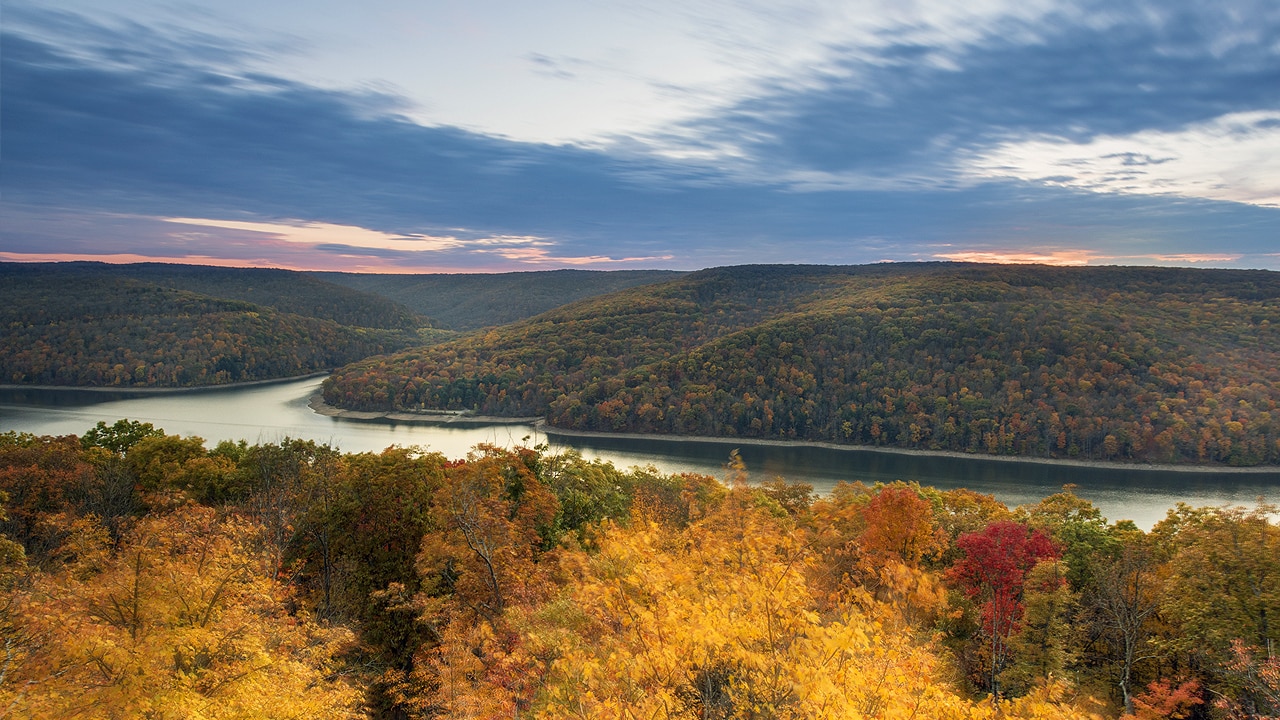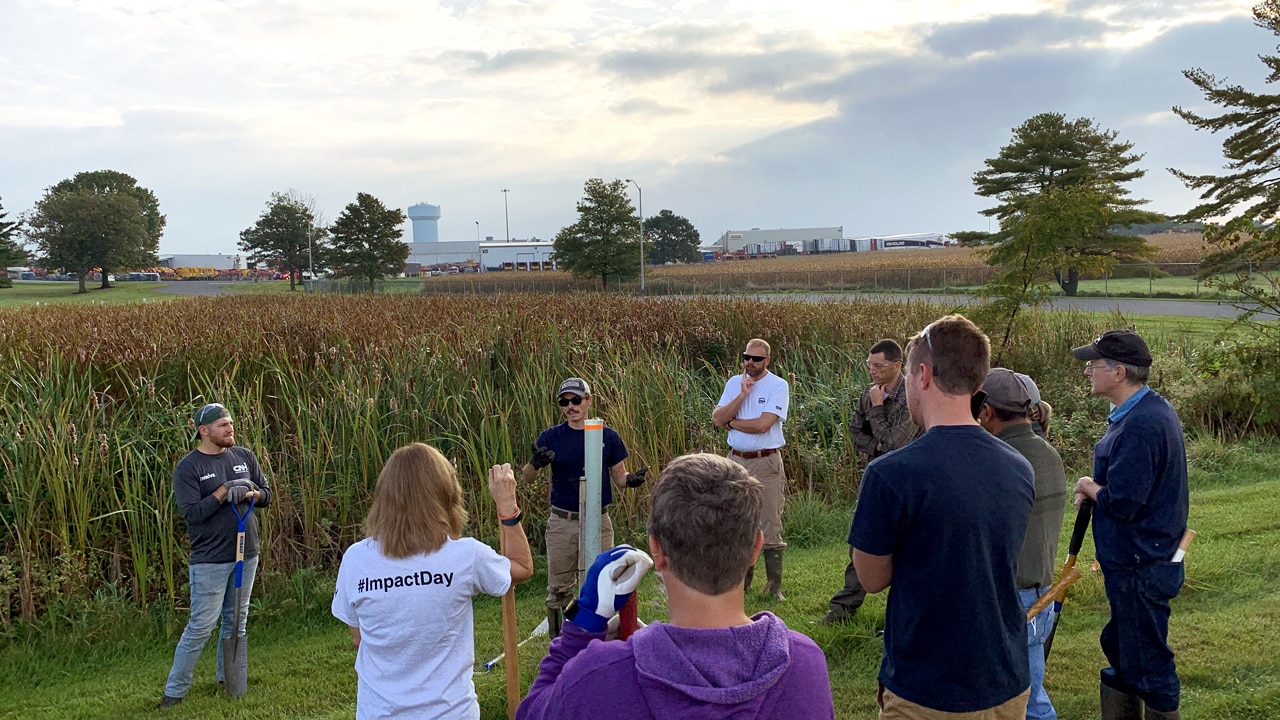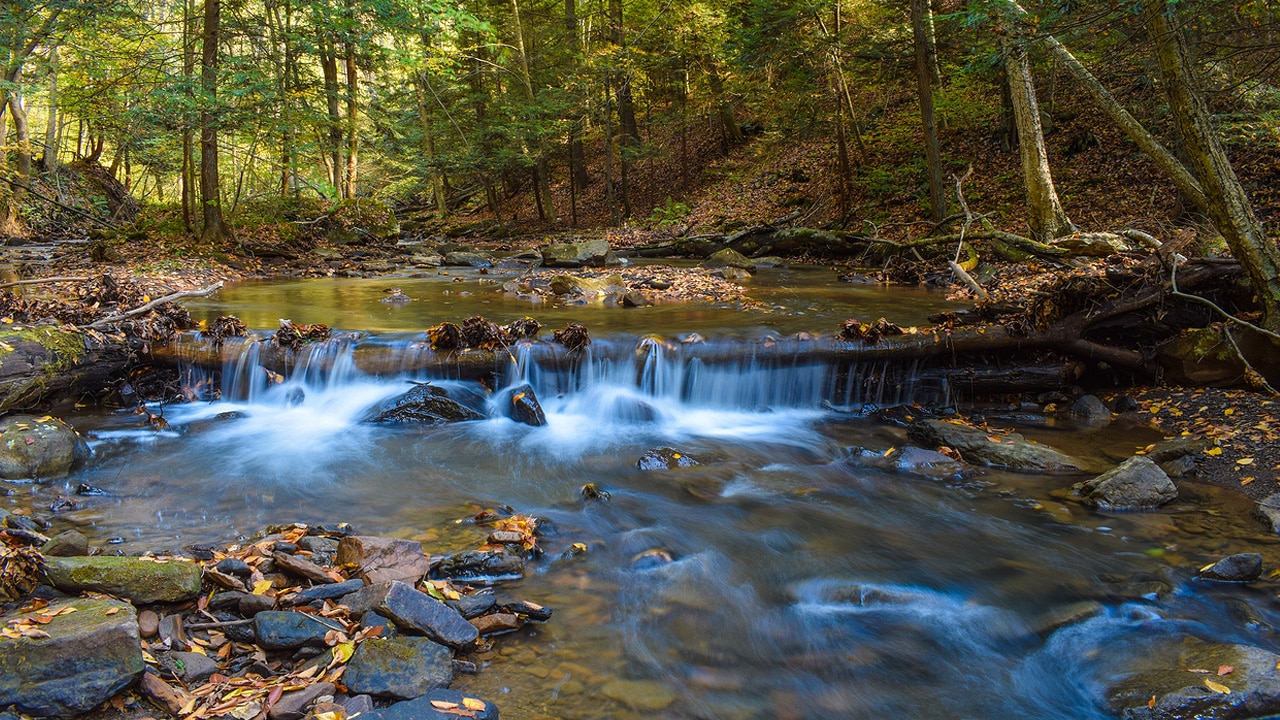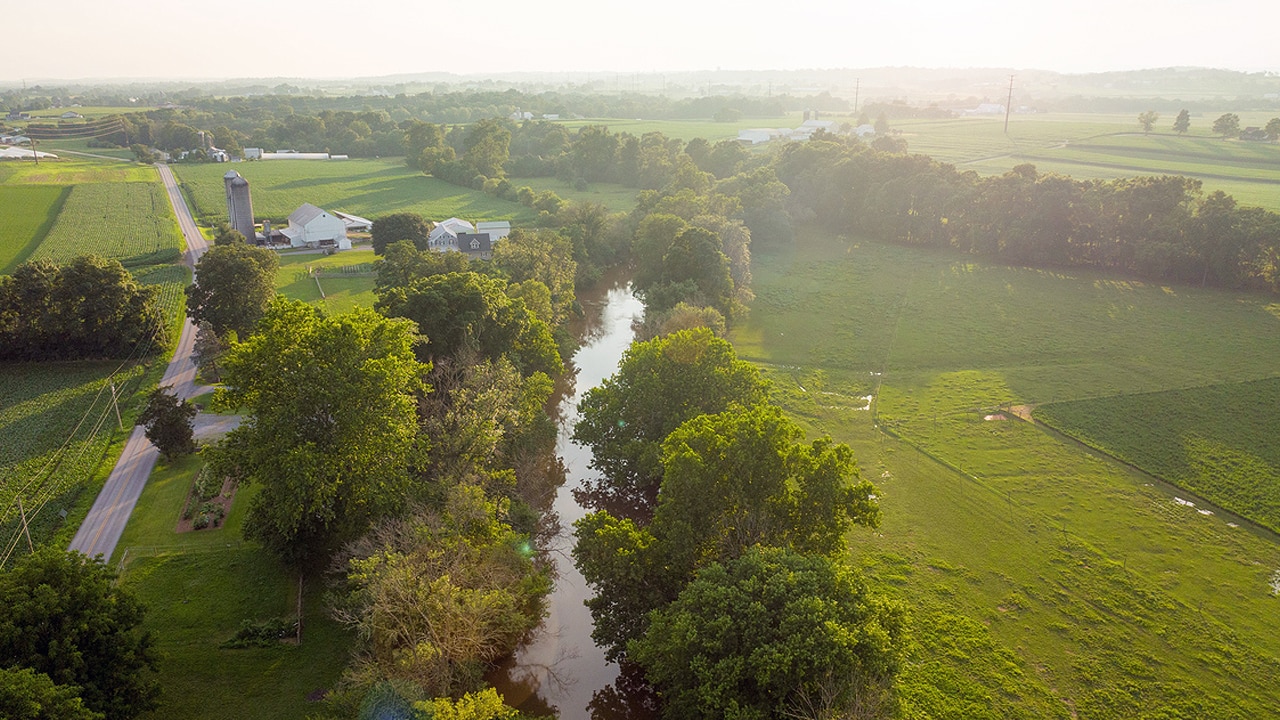



Root Cause: A Tree Planting Effort to Drive Biodiversity
Between March and October, the growing season in Pennsylvania, USA, employee volunteers from our local New Holland Agriculture site can be found walking through an undeveloped streamside forest, monitoring the vitality of acres of newly planted trees.
These volunteers make up the ever-expanding New Holland Campus Sustainability Team: a group of CNH Industrial employees who are helping to plant more than 2,000 trees to improve the health of their small piece of the Chesapeake Bay watershed, the largest of its kind in the United States.


A Fragile Ecosystem at Risk


New Holland Takes Up the Challenge
The 141-hectare (348-acre) New Holland site has been located within the Chesapeake Bay watershed since its founding in 1895. To protect and nurture their beautiful and historic surroundings, employees created the New Holland Campus Sustainability Team. The Team has undertaken the challenge of reinstating vegetation along the stretch of watershed on their doorstep.


Buffering to Protect the Forest
Vegetation that grows next to streams and rivers, known as forest buffers, is critical to the health of the Chesapeake Bay. These forest buffers perform multiple tasks: they prevent pollution from entering waterways, stabilize stream banks, cool streams during hot weather and keep agricultural land productive by helping to prevent flooding and soil erosion.
Furthermore, at least half of the Chesapeake Bay region’s native animal species — including wood ducks, bald eagles, turtles and amphibians — depend on these forest buffers for food, shelter and access to water. The Team planted a forest buffer on the New Holland campus, comprised of native trees and shrubs, to keep invasive non-native plant species at bay while improving pollinator habitat and boosting local wildlife.Commitment to the Environment
Ryan Romanowski, whose day job is as a Gross Margin Improvement Engineer at CNH Industrial, is also co-chair of the New Holland Campus Sustainability Team. He describes its volunteers as a “grassroots team of employees who are passionate about environmental sustainability.” Working alongside partners from the Alliance for the Chesapeake Bay, the team continues to maintain the forest buffer planted on the campus and is constantly seeking out opportunities to plant new ones. “We are so passionate, and we want to get this done,” says Romanowski.
The plan is that in three to five years’ time, the forest buffer should have grown enough to become mostly self-maintaining.
The New Holland Campus Sustainability Team has also grown, and some team members have taken on new sustainability projects. These include initiatives focusing on recycling and reducing energy consumption, growing and donating produce to the local food bank, enhancing pollinator habitat and implementing agricultural management best practices at the on-site Company farm.


Engaging with the Local Community
The forest buffer project continues to be a source of inspiration, as environmental sustainability increasingly becomes a topic of conversation among the 1,200 employees on the New Holland campus.
“We care about farmers’ land, that’s our business,” says Romanowski. “We want to work in tandem with farmers, the community and environmental enthusiasts to affect positive environmental change for everyone, locally and downstream.”
For CNH Industrial, collaborating on projects that benefit the communities where its plants operate is of crucial importance. The forest buffer and the work of the New Holland Campus Sustainability Team are a fine example of this approach in action.
Root Cause: A Tree Planting Effort to Drive Biodiversity
The Chesapeake Bay watershed – a vast area on the US’s Eastern Seaboard – is not only home to a variety of trees, shrubs, and wildlife, but is also the birthplace of New Holland Agriculture, a global agricultural brand of CNH Industrial.
Since it was founded in 1895, New Holland has maintained a campus in this area, and its employees are working with the local community to protect and improve the health of this unique and ecologically important expanse of waterway.

